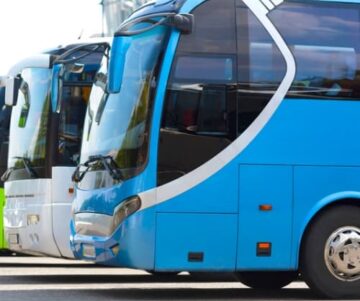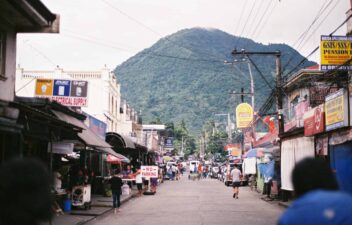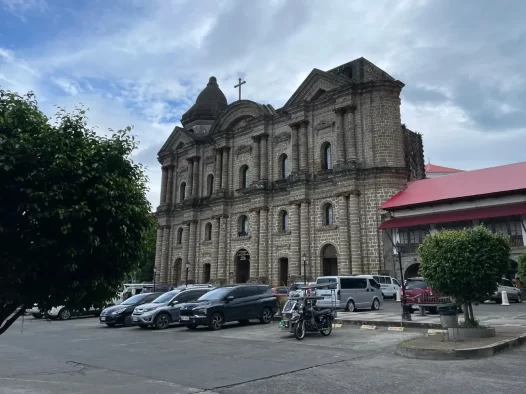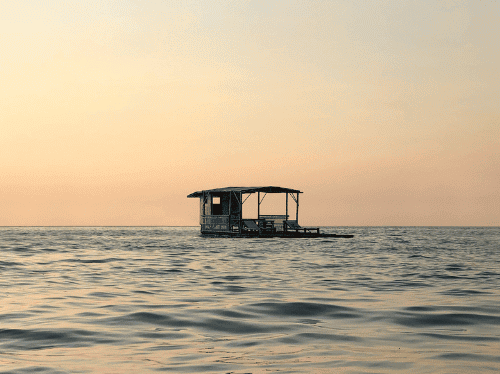Cuenca
Cuenca, a captivating municipality nestled in the embrace of Batangas, is renowned for its resplendent natural treasures that beckon visitors from far and wide. Embarking upon the lakeshore vicinity of Taal Lake, enchantment unfolds as one ventures into the ethereal realms of Barangay Don Juan and Barangay Calumayin. Here, the gentle lapping of the azure waters caresses the senses, while the awe-inspiring presence of Mount Maculot reigns supreme, adorning the landscape with its majestic silhouette. With each step, panoramic vistas reveal themselves, painting a tapestry of unspoiled beauty adorned with lush foliage and thriving biodiversity.
But the allure of Cuenca extends beyond its bountiful embrace of nature’s wonders. It proudly boasts a burgeoning tapestry of tourism-related enterprises, including a myriad of exquisite resorts that grace its landscape. These establishments, born from the vision and passion of enterprising minds, contribute significantly to the vibrant tapestry of tourism in the municipality, enticing an influx of visitors seeking solace, serenity, and an escape from the mundane.
In Cuenca, the harmony between nature’s symphony and the endeavors of humankind weaves a captivating narrative, inviting all who venture forth to immerse themselves in its mesmerizing embrace.
History and Heritage
Cuenca, a fourth-class municipality in Batangas, holds a significant position as one of the province’s 31 component towns. Situated at the heart of Batangas, it was given the nickname “Cuenca” by Governor Paez in homage to his birthplace in Spain, which shares similar climate and lush landscapes. The town is known for its rich natural, historical, and cultural attractions.
Historical records indicate that Cuenca officially separated from its mother town, San Jose, on March 13, 1877, following a petition by esteemed leaders from Barrio Maculog. However, subsequent findings from the National Historical Institute and National Archives revealed that the true foundation date was November 7, 1876, leading to a correction of the town’s historical record.
To align with this discovery, the Sanggunian Bayan passed Resolution No. 2000-319 on November 6, 2000, officially amending the founding date of Cuenca. Consequently, the customary observance of the town’s founding anniversary, traditionally held every March 13, was shifted to November 7, starting from the year 2000 until the present.
Climate
The rainy season starts in June and ends in November. When December comes, the people experienced a very cool dawn. The summer season on the month of March to the end of May.
If you prefer a hassle-free trip, you can rent a car or hire a private vehicle for more convenience and flexibility. Public transportation, such as buses and jeepneys, is also available and can be a more budget-friendly option.
Batangas: Where history, beauty, and resilience converge, creating a tapestry of captivating stories and unforgettable moments.
Tinapay Festival
The Tinapay Festival is a joyous celebration held in Cuenca, Batangas, dedicated to showcasing, promoting, and honoring the exceptional workmanship of the town’s panaderos or bakers and the bread-making industry. With a reputation for being the birthplace of many Metro Manila bakeries, Cuenca proudly claims the title “Home of the Bakers.” The festival features a variety of activities, including bread-making contests and vibrant parades that highlight the remarkable skills and creativity of the Cuenqueño bakers. It is a wonderful occasion to appreciate the artistry and dedication that goes into creating delicious bread and to celebrate the town’s rich baking heritage.



Local Attractions
Batangas in the Philippines offers a range of local attractions that cater to various interests. These are just a few of the attractions you can explore in Batangas. Whether you’re interested in history, nature, or relaxation, the city offers something for everyone.
Getting Around

Buses
Buses provide transportation for longer distances, connecting Batangas with other regions and provinces. These buses have designated terminals and offer a more comfortable option for longer journeys.

Jeepneys
Jeepneys are a staple mode of public transportation in the Philippines. They are colorful, elongated jeeps that can carry multiple passengers. Jeepneys follow specific routes and have fixed fares.

Tricycles
These motorized vehicles consist of a motorcycle with a sidecar, which can accommodate around 3 to 4 passengers. Tricycles are commonly used for short trips within the city, and fares are usually negotiable.




